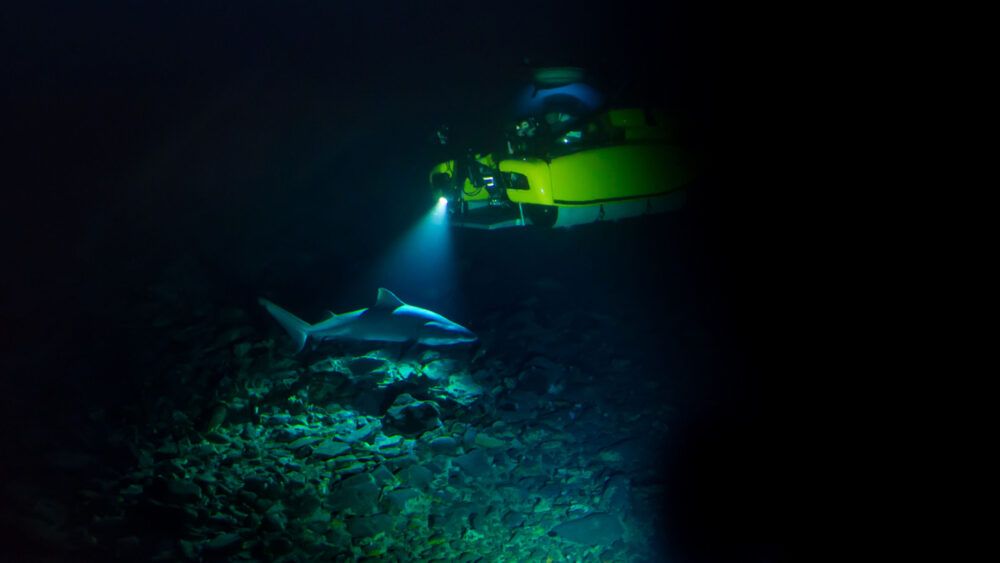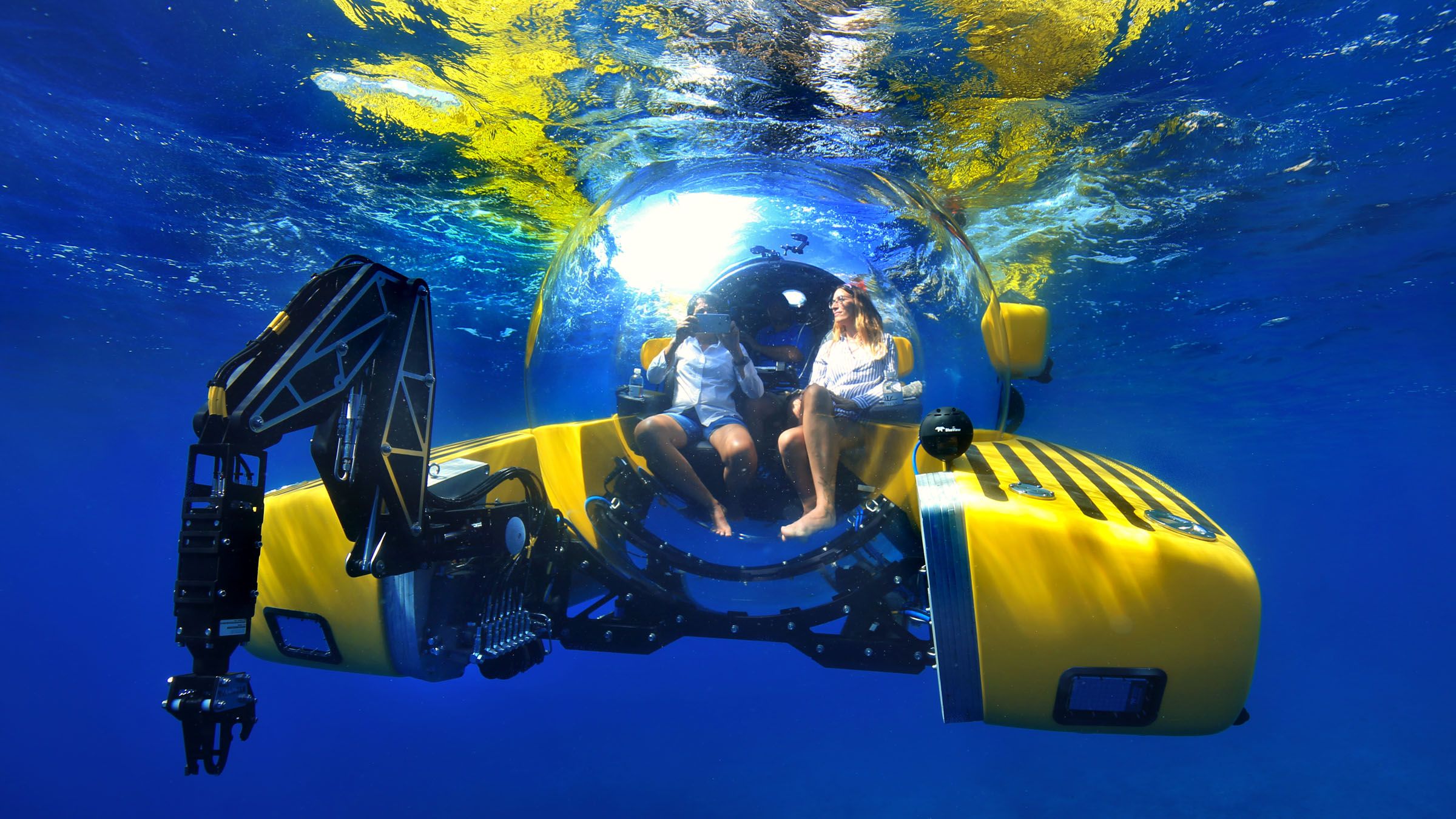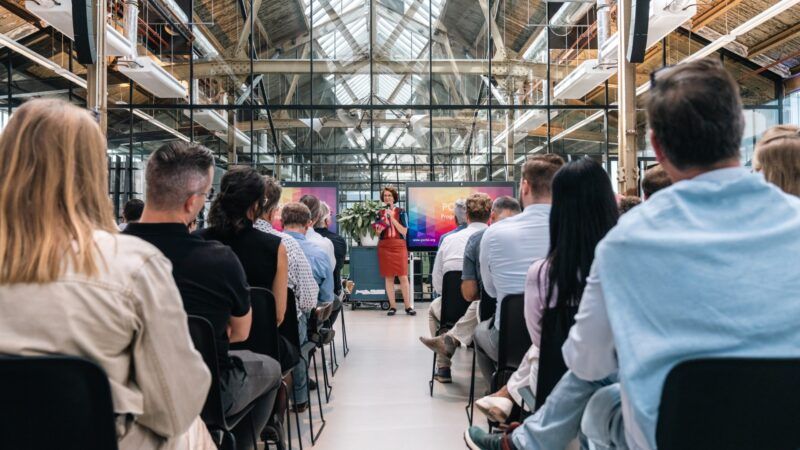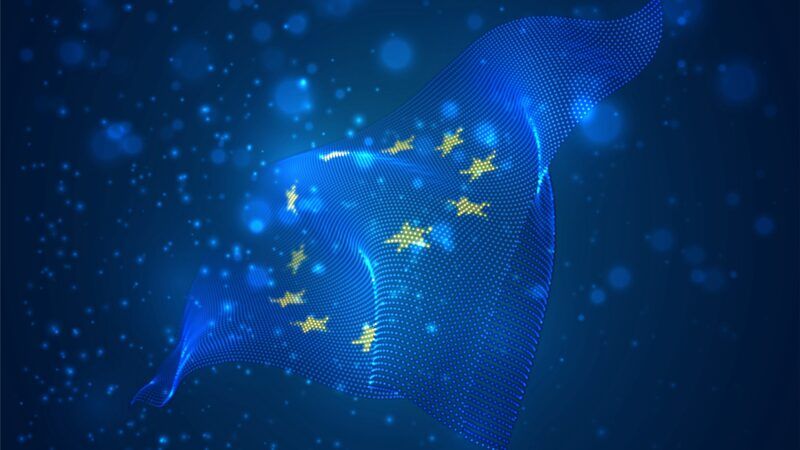 Triton's submarines enable biologists and scientists to access previously unexplored ocean depths (Triton Submarines/Mark Taylor)
Triton's submarines enable biologists and scientists to access previously unexplored ocean depths (Triton Submarines/Mark Taylor)
Triton Submarines, catalan technology in the deep sea
Innovation also exists at the bottom of the ocean, a hitherto unknown but extremely valuable territory for our present and future. The technological capabilities of today's bathyscaphes already allow descents to more than 10,000 metres. This is the milestone achieved by the American company Triton Submarines. We interviewed Héctor Salvador, Operations Director of the European subsidiary of the submersible manufacturer that holds this world record.
 Triton's submarines enable biologists and scientists to access previously unexplored ocean depths (Triton Submarines/Mark Taylor)
Triton's submarines enable biologists and scientists to access previously unexplored ocean depths (Triton Submarines/Mark Taylor)
While humanity focused its technological efforts on the sky, sending astronauts to the Moon and robots to Venus, Mars and the far reaches of the solar system, 70% of the planet had been put on the back burner. Until now.
The development of the bathyscaphe industry is directly proportional to the importance and protection of the oceans. They are the source of the oxygen we breathe, a sink for CO2, regulators of the planet's temperature and the basis of the food chain.
"Right here, ten miles from the mouth of the Port of Barcelona, there is an incredible ecosystem and biodiversity. It is important to show them to the general public, for people to understand what we have here, how threatened it is and to get involved in protecting the ocean," says Héctor Salvador, Operations Director of Triton Submarines EMEA in Sant Cugat del Vallès, a subsidiary of the company's headquarters in Florida, USA.
Its portfolio of submersibles are designed and manufactured for recreational, professional and commercial uses and to withstand these extreme depths.
In addition to holding this position, Salvador is the only Spaniard to have descended to a depth of 10,706 metres, to the Sirena Abyss, the deepest point of the Mariana Trench, in a descent that lasted 12 hours. He did it in a Triton submarine, the only manufacturer capable of descending to these depths to date.
"Submarines are transformative machines because the person who comes up from a dive is not the same person who went down," he says.

Question: How does Triton Submarines manage to descend to depths that no other company has managed to reach?
Héctor Salvador (H.S.): The large ocean trenches are between 8,000 and 11,000 metres deep, and account for only 2% of the ocean surface. Historically, most oceanographic research has been conducted up to 6,000 metres. This is the depth that large government submarines, such as the US Alvin or the Russian Mir, reach.
Between 6,000 and 11,000 metres the pressures are extreme and the technology required is complex. Within the small sector of submersible manufacturers, our competitors focus on mass production, while we focus on tailor-made submarines.
Companies looking for an extreme project call us because of our ability to prototype and design tailor-made submarines for specific missions.
Is extreme pressure then one of the most complex elements of submarine design?
H.S.: Safety is absolutely paramount. The petrochemical industry, for example, uses unmanned robots. At Triton, we always go for the manned vehicle because we believe that only a human can inspire a human.
We have the only vehicle on the planet that can descend into the Mariana Trench, at a depth of 10,994 metres. The second deepest vehicle goes down to half that depth.
If anything goes wrong, there is absolutely no rescue capability. The way to avoid that is from the design phase, redundancies in the system, making the submersible intrinsically safe, thinking about everything that could go wrong and the vehicle having a system that can overcome that failure to finish the dive safely. And this is what makes submarines such complex machines. We are travelling to the limits of our planet.
In these extreme depths, how do you communicate with the outside world?
H.S.: We have acoustic modems, ultrasonic modems, which allow us to transfer voice in an analogue way. It's the simplest and the safest. Then we have data modems that allow us to send telemetry so that on the surface they constantly know where you are, at what depth and what the oxygen and humidity levels are in the cabin. Now we are testing a new technology that allows us to send two-way video over a laser link.
In addition to scientific expeditions, what other functions can be performed at such extreme depths?
H.S.: Critical infrastructure such as data cables, high-voltage cables, oil and gas pipelines used to be laid on the seabed with the certainty that no one could reach them. The sabotage of the Nord Stream pipelines on the seabed of the Baltic Sea has shown us that this is no longer the case. So it is vital to have vehicles that can inspect, maintain and protect all these infrastructures.
Given that this is a relatively new sector, who regulates it?
H.S.: Our Aurelia submarine is the first submersible manufactured in Spain, with the supervision of the Directorate General of the Merchant Navy. This shows the progress the Spanish authorities have made in working with us, in understanding the risks and technical complexity and in developing regulations to allow for the construction, launch, certification testing and flagging of such special vehicles as manned submersibles.
Life support systems, batteries, oxygen, food, water, are designed for a minimum of four and a half days. This is an international certification standard that all certified submersible manufacturers must meet.
The 20th century was the century of aviation and space. The 21st century is going to be the century of the oceans, and this has just begun. More and more submersibles and more and more institutions will understand the value of studying the seabed. We will increasingly understand what the ocean can bring us and we will have greater need for accessing it. I believe this is just the beginning of a new revolution where humanity will be much more connected to the seas.
Why, of all the European countries, did Triton Submarines choose Spain for its EMEA headquarters?
H.S.: Barcelona was the first candidate, mainly because of its port infrastructure. Being able to bring containers directly from our headquarters in Miami in just two weeks and that both manufacturing plants could communicate with each other was a very important point.
On the other hand, we need access to the sea. Port Forum is our home port, where the prototypes are submerged for the first time, we do stability tests, all the safety systems are certified and the phase that allows us to access deeper waters is completed.
Barcelona has another characteristic; it has depths of 1,000 metres less than 12 nautical miles from the mouth of the Port. And on the Costa Brava we have depths of up to 3,000 metres.
Thanks to the infrastructure and the excellence of the region's suppliers, we have become synonymous with quality in just five years.
What do you develop here?
H.S.: We focus on R&D. All technological development is done in Sant Cugat del Vallès, mainly because of access to suppliers and pressure chambers that allow us to perform tests. In terms of manufacturing, we focus on interior design, which is the part of the submersible that is in direct contact with the end user. In the United States, they work more on the exterior of the vehicle. Then, depending on where the customer is based, the final assembly takes place on the continent of destination.
We are now fully specialised in pressure-tolerant electronics. This is electronics that does not need to be in a bottle to protect it from external pressure, but can be in a small oil-soaked container exposed to pressure. This allows us to make the submersible much lighter, much more compact and easier to maintain.
All this is the result of the excellence of all the industry we have in Barcelona, since the motors are manufactured in the Vallès, the batteries in Llobregat, the machining in L'Hospitalet... And thanks to the universities we can form trainees who then stay to work with us. This is very important because, being a new industry, it is necessary to train specialists as submarine mechanics. This allows the company to grow with local resources.

What is the production capacity of the factory?
H.S.: Right now, we can build four submarines in parallel. We have to expand the facilities, which is another challenge for this year, because we have big projects coming up that will require us to be able to work on six submersibles at the same time and on projects lasting 18 months.
You mentioned that you work commission-based. Who are Triton Submarines' clients?
Interestingly, 100% are private, a new paradigm of our century. When governments like the United States no longer have the capacity to access space, they hire a private company like SpaceX.
The same thing happens in the development of submersibles. They are individuals with a private oceanographic vessel that they lease to governments so that they can develop research campaigns. It's an interesting paradigm. In the past, each government had to have its own oceanographic vessel and maintain it for three to five campaigns a year.
I see a similarity with the patrons who help drive technological development. Someone has to finance this first leap for the technology to enter the market, increase demand and become more accessible.
What are you working on now?
H.S.: The next challenge we have set ourselves is to go down to these extreme depths again, but with transparent hulls. Right now, the limit for this technology is 2,500 metres. The record is held by Aurelia, which is the only manned submersible in the world to have reached these depths with a transparent hull.
Heirs to the findings of the biologist and oceanographer Jacques-Yves Cousteau, the first man to share the wonders of the oceans with the whole world aboard the Calypso, the bathyscaphes of the 21st century continue to feed the hunger of human beings to reach the limits of the world. A thirst for adventure in pursuit of science and knowledge fuelled, in this case, by Catalan technology.





